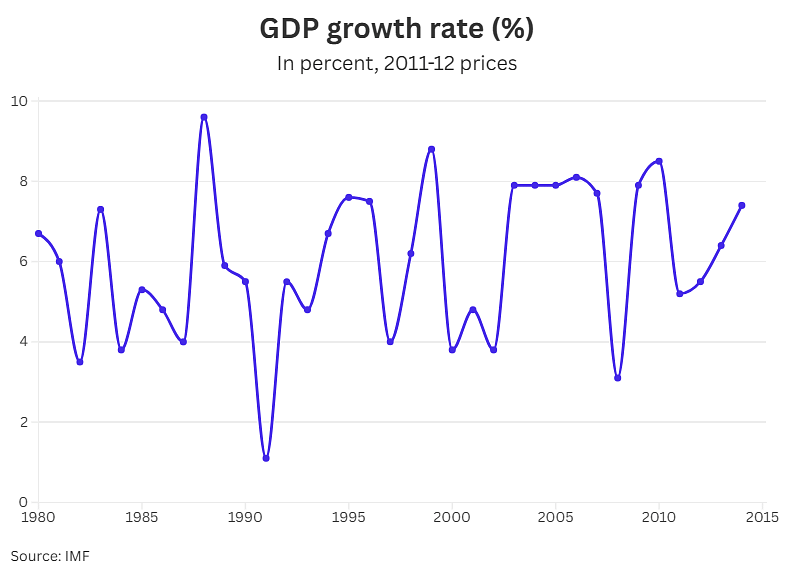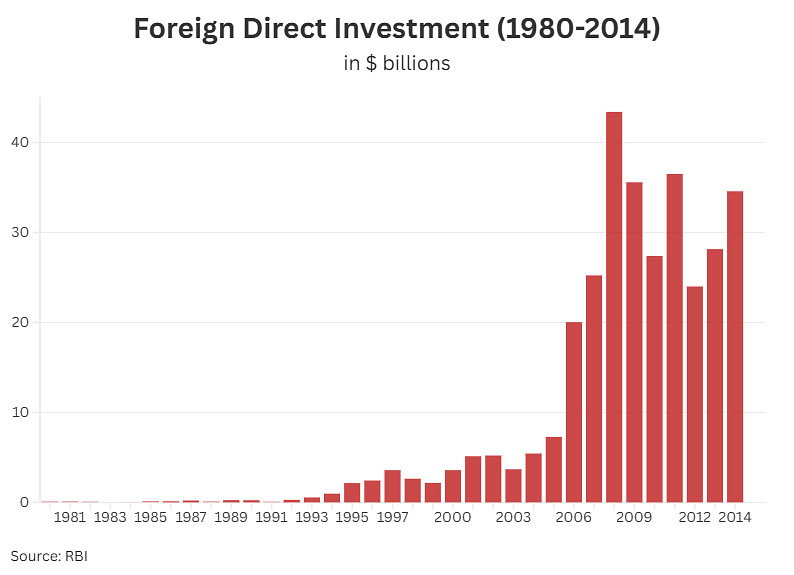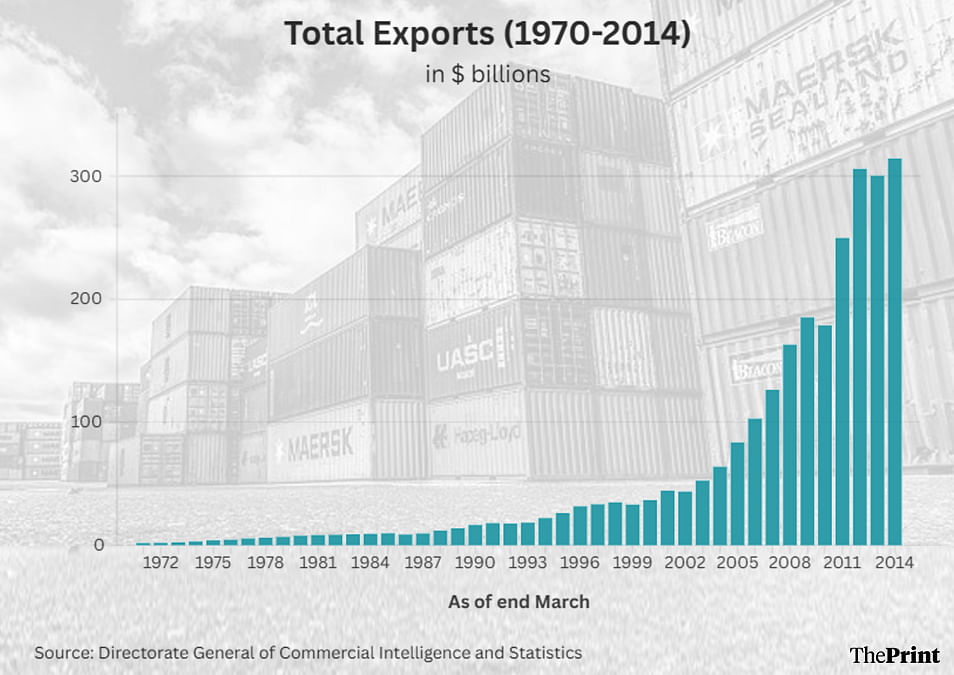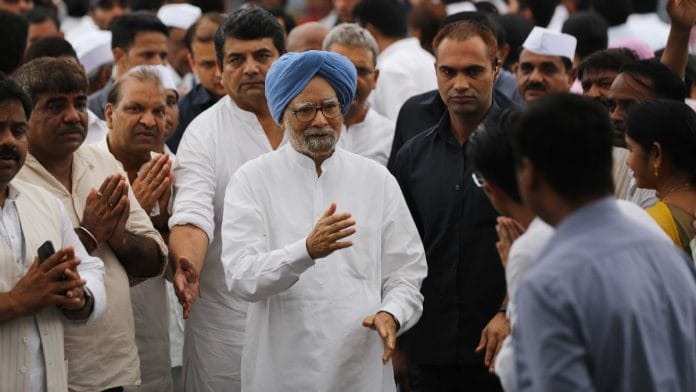New Delhi: Manmohan Singh is often described as the architect of India’s economic reforms. Appointed as finance minister under Prime Minister P.V. Narasimha Rao, Singh enacted a slew of reforms that broke the shackles of overregulation and protectionism.
Singh’s defining moment came in 1991. At the time, India was close to a sovereign default, dealing with both a balance-of-payments crisis and dwindling foreign reserves.
ThePrint takes a look at how three key economic metrics—Gross Domestic Product (GDP) growth, foreign direct investment (FDI), and foreign trade—changed since Singh set in motion India’s liberalisation in 1991 and when he resigned as Prime Minister in 2014.
By the end of Singh’s tenure as Prime Minister in 2014, India’s GDP had grown tenfold since 1991, from $270 billion to $2 trillion.
Exports had increased by over 17 times, from close to $18 billion in 1991 to over $310 billion in 2014.
Singh’s policies also impacted FDI, which increased from $0.28 billion in 1992 to over $34 billion in 2014.
Impact on growth
In 1991, Singh inherited a stagnant economy with a GDP growth rate of 1.1 percent. Growth rebounded to over five percent the following year, showcasing the immediate economic impact of Singh’s liberalisation policies.
These policies included dismantling of the License Raj, a period between 1947 and the early 1990s characterised by excessive government regulations. Singh encouraged private sector participation by reducing barriers to entry, which allowed for more competition in the market.
Additionally, he also devalued the rupee, paving the way for making Indian exports more competitive.
The strong GDP growth rate continued through the 1990s, averaging 6.4 percent until the end of the decade.

During his tenure as Prime Minister from 2004 to 2014, he oversaw a period where India emerged as one of the fastest growing economies globally.
In his first term, GDP growth averaged close to eight percent and reached a peak of 8.5 percent in 2010.
It was not just the country’s overall GDP that grew, but even per capita GDP.
In the 1980s, average per capita GDP stood at Rs 24,800. When Singh took over as finance minister in 1991, per capita GDP was Rs 29,686. By 2014, Singh’s last year as Prime Minister, per capita GDP was Rs 83,091—a 180 percent increase since he enacted his economic reforms in the early 90s.
Investment came flowing in
A direct outcome of liberalising the economy was an increase in FDI in the country.
In the 1980s, the average foreign inflows amounted to $0.11 billion. When Singh took over as finance minister in 1991, foreign inflows stood at $0.07 billion, the lowest since 1985.
In 1992, inflows jumped to $0.28 billion, a 300 percent increase over the previous year.

This trend continued throughout his tenure as finance minister, with inflows rising year on year. In 1996, total inflows amounted to $2.43 billion.
During Singh’s tenure as Prime Minister, FDI inflows surged from $5.4 billion in 2004 to over $34 billion by 2014. This was largely driven by investments in sectors such as telecommunication, real estate and infrastructure.
Trade saw rapid growth
Before 1991, India had a protectionist economic regime, which was reflected in the country’s trade policies.
Tariff rates on imported goods were extremely high, with some duties exceeding 300 percent. Additionally, complicated import licensing stifled competition in the domestic market and hampered innovation.
Facing a balance-of-payments crisis, Singh decided to open the Indian economy by significantly reducing import tariffs, making imports cheaper and forcing domestic industries to become more competitive.
The rupee was also devalued, making Indian exports more competitive internationally. Textiles, leather and agricultural commodities became more affordable to foreign buyers.

When Singh inherited the Indian economy in 1991, exports stood at $18 billion. By 1996, exports jumped to $33 billion, an 83 percent increase.
At the end of his tenure as Prime Minister in 2014, exports stood at $310 billion—a 1,622 percent increase since pre-liberalisation levels.
(Edited by Radifah Kabir)
Also Read: My fanboy relationship with Manmohan Singh endured for 3 decades: Rajeev Chandrasekhar






